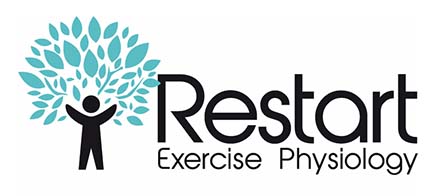Early in my career as an Exercise Physiologist, I was lucky enough to encounter the wisdom and philosophies of Ian O’Dwyer, a world renowned Personal Trainer, teacher and educator based in Noosa Heads, Queensland. Having learnt a very traditional style of exercise prescription during my Sport and Exercise Science degree at USC (Uni of Sunshine Coast) made up of isolation and single-plane/direction movements, it was a massive eye opener walking into Ian’s private studio Fitness Personally. Instead of observing a sea of metal and machinery as per most gyms of the time (circa 2008), Ian’s studio was very minimal by comparison with plenty of floor space. The reasoning for this soon became very clear, as it basically provides room to move, function and react in a 3-dimensional manner.
So wherein lies the beauty of 3D movement, and training in this manner? Simply put, it enables the body to move as it’s designed to; multi-segment, total-body, coordinated movement relative to the environment around it, and reacting to external forces of both gravity and the ground beneath our feet. Training relevant to the way we move in everyday life is key!
An important part of this philosophy involves games and play. The opportunity to get up from our office chair and move around like we did as children is highly valuable and one I fervently endorse. It is also a great reliever of stress and anxiety, providing feel-good endorphins aplenty (click here to read Restart’s blog on additional recommended stress management strategies)!
What are our 3 favourite games at Restart, and why are they so positive for us as human beings?
Tennis Catches
The beauty of tennis catches lies in its simplicity; all you need is a racket and a ball and you’re good to go. We often perform this game during both one-on-one appointments and with small groups. It’s a whole lot of fun, and is surprisingly demanding, having you puffing and panting in no time at all.
We find this game most valuable when it comes to:
– providing an excellent total-body warm-up to get all joints and muscles warmed up, but to also enhance coordination and timing of movement before heading into some more complex movements in the ensuing appointment,
– great stress reliever for sufferers of anxiety and depression. We do have a significant number of clients who fall into this category, and without fail tennis catches gets them smiling and laughing within seconds, the value of which often cannot be measured,
– as part of a circuit to promote greater conditioning, both aerobically and with regards to muscle endurance. For more advanced clients, adding in a punishment like a ‘get down get up’ for any ball drops is a great way to increase exercise intensity, and make the exercise more sports specific depending on the individual.
Reactor Ball
A slightly more complex game that is once again a whole lot of fun is Reactor Ball. Like tennis catches, this game can be played one-on-one or in a small group as pictured, and is generally reserved for our more coordinated and well-balanced clients. RB is great at bringing out the competitive streak in those who play, and can be set up with only a small amount of equipment (a mini-trampoline and a reactor ball/regular high bounce ball as a regression).
The aim of the game is to outscore your opponent; both starting with 5 points, a drop or mis-directed throw reduces your score by 1. Last person with points remaining at the end of play is the winner. RB is exceptionally fun, and has you reacting in the blink of an eye, reaching left right up high and low depending on the bounce of the ball.
Knowing that each and every musculoskeletal structure in our body is designed to move in all three planes (forwards and backwards, sideways, and in rotation), the value of games like RB is clear.
Ball passes in quartet
This is another simple game that people of any age and ability can play, has great benefits on hand-eye coordination, timing of movement, spatial awareness, and is once again great fun. All you need is two medium sized balls, and works well with four players. Another great way to bring out our clients’ competitive streak is to team up into 2 pairs and stand opposite each other. The objective? To perform the most successful passes to your partner in 30 or 60 seconds. Ball collisions are likely to occur, which only adds to the fun, as you must scramble to retrieve your ball and get it back into play as soon as possible.
So there you have it, 3 simple games to promote truly integrated, primal movement patterns, movement that we took for granted as children yet somewhere along the way to adulthood stopped doing, often leading to restrictions, tightness, immobilities and ultimately joint pain. Don’t see games or playing as something that we shouldn’t be doing as adults, but rather embrace them once again and feel the benefits. At the very least I guarantee you’ll have a fun time doing it!
Luke



0 Comments